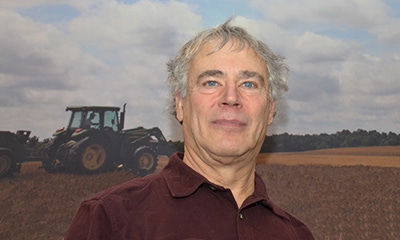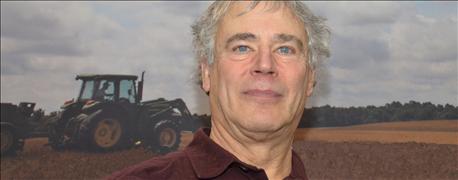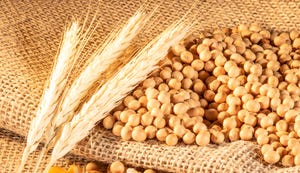
Tom Kilcer has been packing ‘em in at this winter’s Northeast dairy meetings. Interest is “hot” among corn silage producers in the latest findings of this certified crop advisor’s winter forage crop research.
Kilcer’s work at Advanced Ag Systems, Kinderhook, N.Y., suggests that teaming up winter forage/cover crops – triticale, specifically – with brachytic dwarf brown mid-rib forage sorghum can produce more milk via high-quality silage than corn – with close to 30% less nitrogen plus greater environmental benefits.

ANOTHER ‘HOT’ IDEA: Tom Kilcer, who developed the “haylage in a day” program while at Cornell University, feels doublecropping winter forage crops with dwarf BMR forage sorghum will be an environmental winner for dairy farms.
Step one is to plant 85- to 89-day brachytic dwarf BMR forage sorghum this spring. Step two is to harvest it in early fall to give a fall-seeded winter forage crop, such as triticale, enough time to produce three to five dry-matter tons of high-quality silage next spring.
It’s a new twist to double-cropping that cuts crop risks in half and can yield 25% to 35% more tons per acre of high-quality silage, he contends. Unlike taller sorghum varieties, brachytic dwarf BMR forage varieties have excellent standability and can produce more than 21 tons of silage per acre if planted correctly.
This system also meshes well with dairy farm crop rotational needs. Planting triticale 10 days to two weeks before you’d plant wheat makes a huge difference in dry matter tonnage. “You can harvest three to more than five tons of triticale (depending on Northeast location) in the spring,” he estimates. Then you can plant either the dwarf forage sorghum, or seed legumes and take an August cutting.
“You’ll also get a better stand of alfalfa and/or medium red clover using a no-till drill in early June than trying to get it in earlier into wet soils, he points out. And the early fall seeding of winter forage crops allows for fall manure applications plus subsequent reduced nitrogen losses.
Spring planting tips
* Plant forage sorghum after soil temperatures reach 60 degrees Fahrenheit – and rising, and only ½- to ¾-inches deep. That can be a challenge, he admits. But deeper seed takes longer to emerge, and constrains the season since you want to fall-plant winter forages as early as possible.
* Drilling or planting in narrow rows (7.5-inch) is preferred to allow greater light interception and grow stronger stalks. Narrow-row BMR sorghum has a yield advantage over 30-inch rows, but requires a row-less chopper head. And Kilcer warns, “Don’t trying running 18 to 26 tons of forage sorghum through a hay mower.”
* Exact seed placement is critical. Planters with sorghum plates may do an excellent job. But even a modern drill must be set up properly. It needs a gear reduction to allow a very low seeding rate (8 to 10 pounds per acre) to be accurately dispersed.
* Replace corregated drill drop tubes. Much smaller brachytic dwarf BMR sorghum and even triticale seed easily hangs up in the grooves, then dumps in clusters. Replacing the corrugated tube with a sleeved tube makes a day/night difference in stand uniformity of both.
* Kilcer planted 153,000 seeds (8.5 pounds) per acre with a cultipacker seeder. Switching to the legume seed mechanism allowed the smaller brachytic dwarf forage sorghum to meter through. In his trials, he estimates 3% to 5% of the seeds remained on the surface.
What’s brachytic dwarf BMR forage sorghum?
It’s a short (dwarf) BMR forage sorghum, not a grain sorghum. A brachytic dwarf has the same number of nodes as a tall variety, but each node is slightly shorter and has all the leaves of tall ones.
While there are dwarf varieties, forage sorghum varieties and BMR varieties, there are few that have the traits all in one plant, and few in the seed market. Kilcer has worked with Alta Seed’s 85- to 89-day BMR-6 brachytic dwarf forage sorghum. King’s Agriseed is a Northeast distributor.
For more details, visit advancedagsys.
About the Author(s)
You May Also Like




